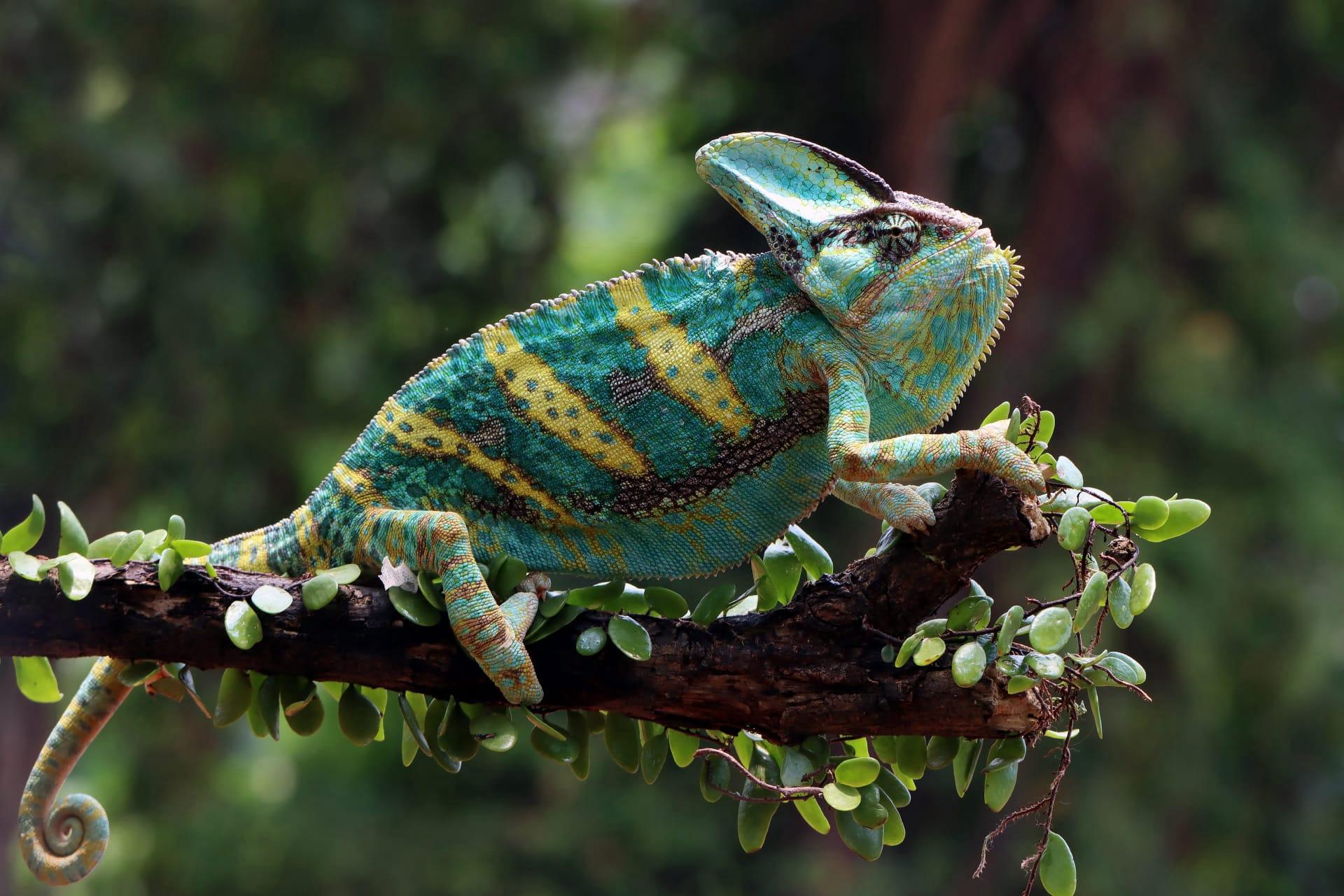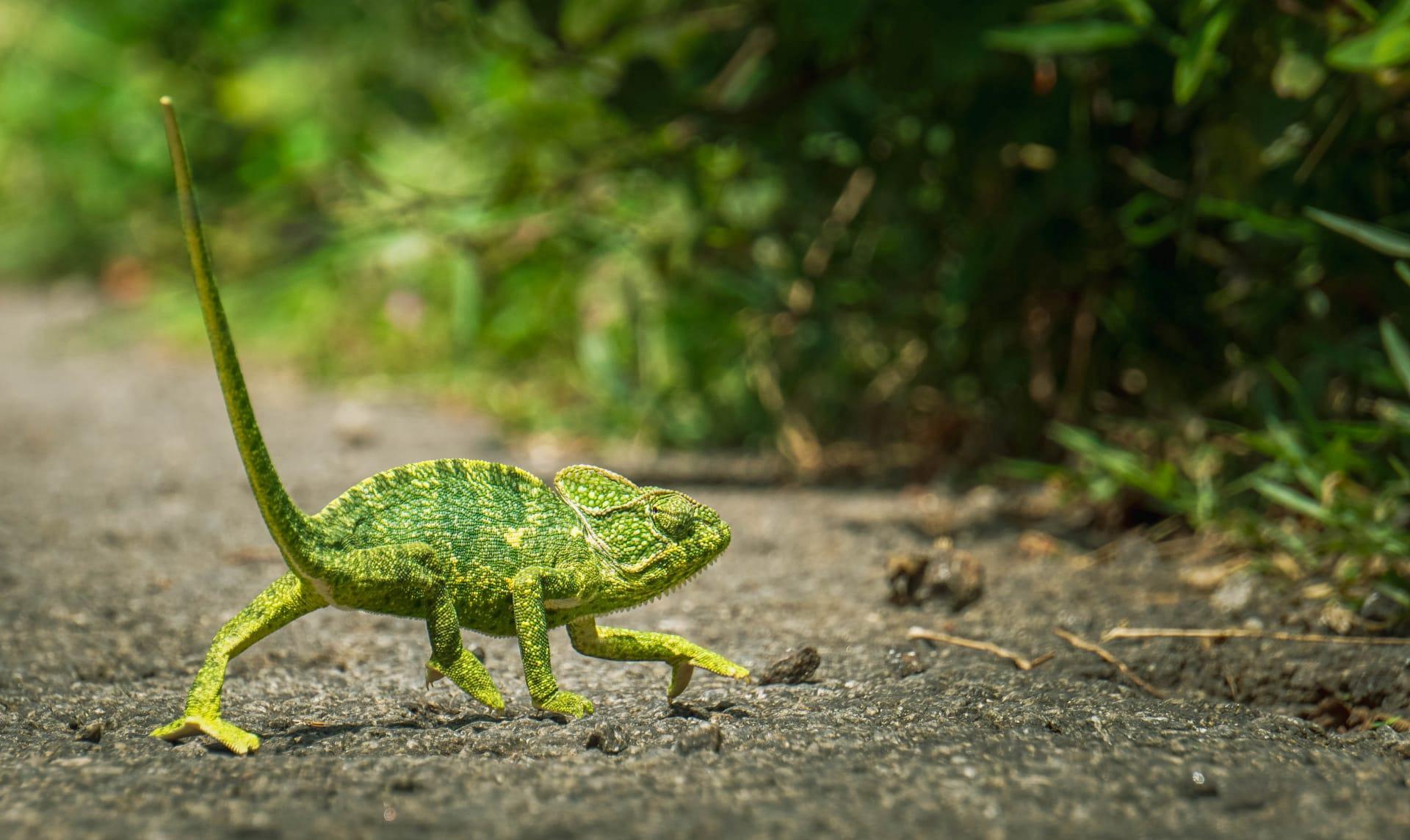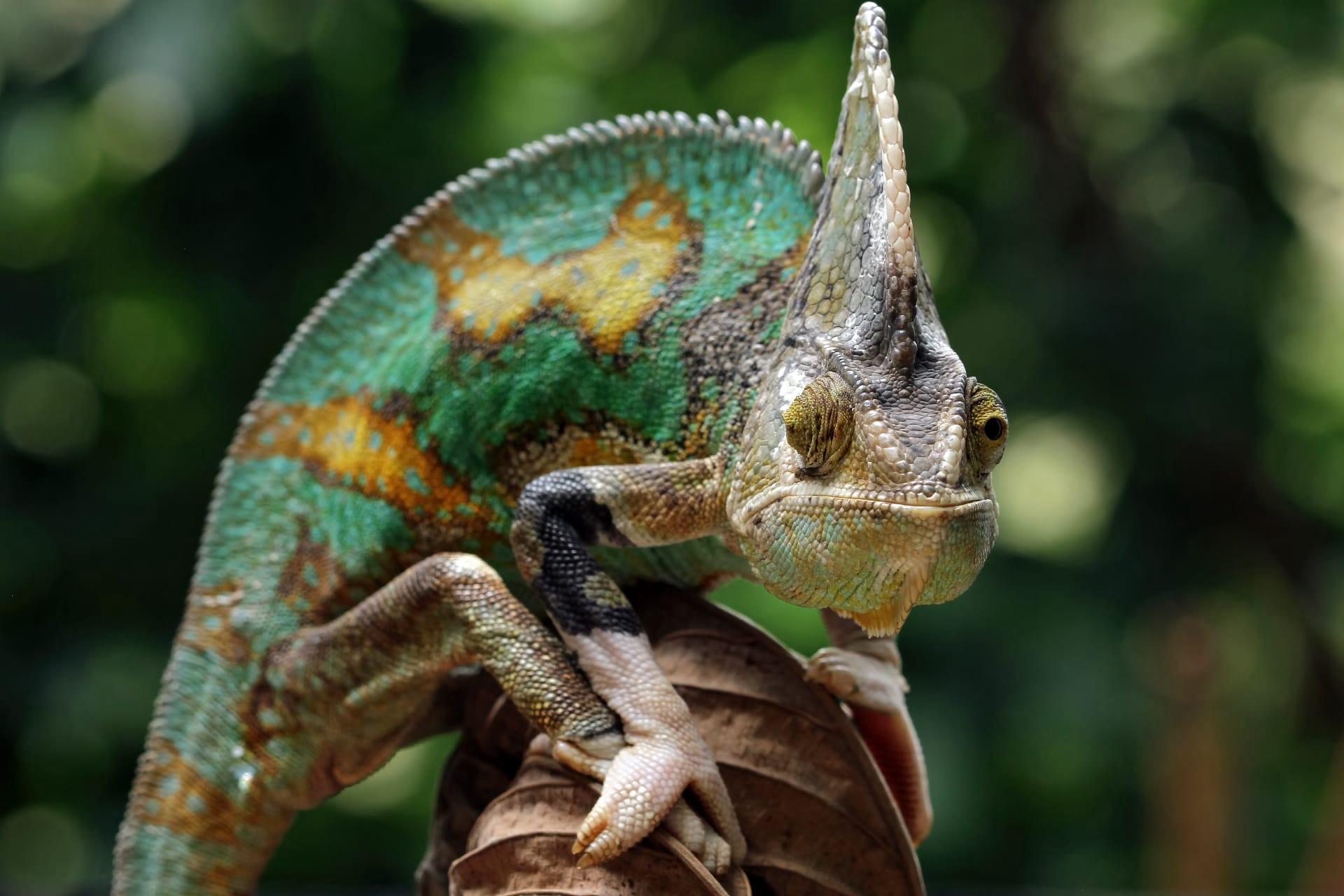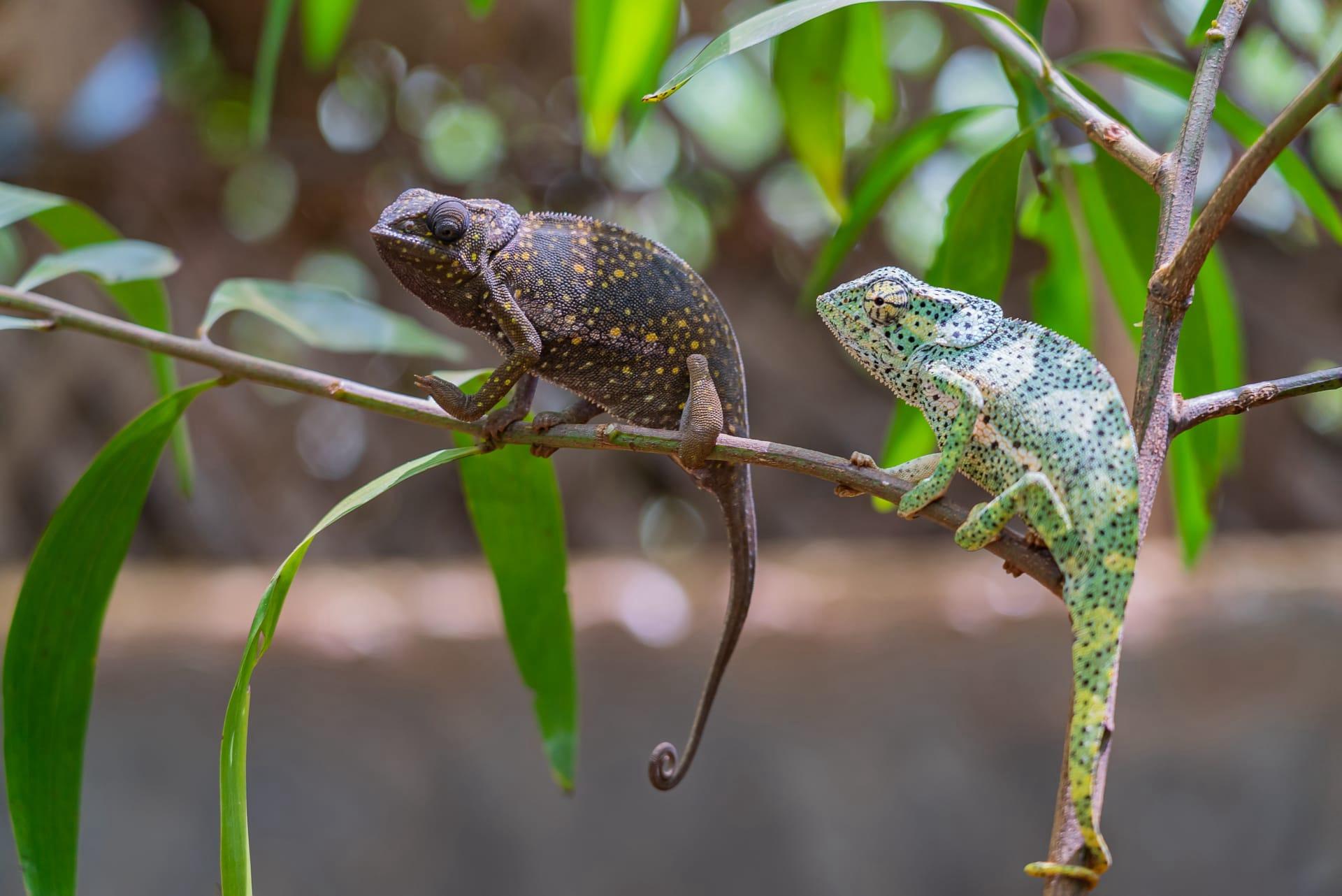Veiled Chameleon Trivia
- Home /
- Trivia Question /
- Animal /
- Veiled Chameleon Trivia
1
Question: What unique features make the Veiled Chameleon stand out in the reptile world?
Answer: Veiled Chameleons are known for their impressive extendable tongue, which can shoot out to catch prey in a fraction of a second. Their tongues can be as long as 1.5 to 2 times their body length, making their tongue-to-body ratio one of the highest among reptiles. They also have a distinctive casque, a helmet-like ridge on their head, which helps them collect water that drips down into their mouths.
Question: How do Veiled Chameleons change color and what does it indicate?
Answer: Contrary to popular belief, Veiled Chameleons change color primarily for communication and temperature regulation, not for camouflage. They have specialized cells, chromatophores, that expand or contract to show different colors. For instance, a calm chameleon might show a green hue, while a stressed one might turn darker colors. Their color can also indicate health, mood, and reproductive behavior.

2
Question: Is it true that Veiled Chameleons can live comfortably in very humid environments?
Answer: Actually, Veiled Chameleons prefer a moderately humid environment. Native to the Arabian Peninsula, they thrive in an environment with around 50% humidity. Excessive humidity can lead to respiratory and skin infections. It's vital to maintain a proper humidity level in captivity for their health.
Question: Can Veiled Chameleons be kept together in the same enclosure?
Answer: It's a common misconception that chameleons enjoy company. In reality, Veiled Chameleons are solitary creatures and can become stressed or aggressive if housed together. It's best to keep them in separate enclosures to avoid stress-related health issues and territorial conflicts.

3
Question: What kind of diet is required for a healthy Veiled Chameleon?
Answer: Veiled Chameleons are primarily insectivores, requiring a diet rich in insects like crickets, roaches, and worms. They also uniquely benefit from occasional plant matter, such as leaves and fruits, which provides additional hydration and nutrients. Variety is key, and supplementing their diet with calcium and vitamins is crucial for preventing nutritional deficiencies.
Question: How do Veiled Chameleons adapt to different lighting conditions in their habitat?
Answer: Veiled Chameleons need a cycle of 12 hours of daylight and 12 hours of darkness. They require UVB light to synthesize Vitamin D3, which is essential for calcium absorption. In their natural habitat, they are adept at moving through varying light conditions, using sunlight for thermoregulation while also seeking shade to prevent overheating.

4
Question: How long do Veiled Chameleons typically live, and what factors influence their lifespan?
Answer: In captivity, Veiled Chameleons can live for about 6 to 8 years, with females generally having a shorter lifespan. Factors affecting their longevity include diet, environmental conditions, stress levels, and genetic factors. Proper care, including a balanced diet, appropriate habitat setup, and regular veterinary check-ups, can significantly impact their lifespan.
Question: Can Veiled Chameleons recognize their human caregivers?
Answer: While Veiled Chameleons aren't known for their social bonding, they can recognize and respond to their caregivers. They can become familiar with the presence of their owners and may show less stress when handled by them. However, they are not typically affectionate pets and excessive handling can cause stress.

5
Question: What is the significance of the casque on a Veiled Chameleon's head?
Answer: The casque on a Veiled Chameleon’s head serves multiple purposes. It's not only an impressive visual feature but also plays a role in hydration. The casque collects dew and rainwater, directing it towards the chameleon's mouth. It also indicates health and vitality, with a larger casque often being a sign of a healthy individual.
Question: How do Veiled Chameleons give birth, and what is unique about their reproduction?
Answer: Veiled Chameleons are oviparous, meaning they lay eggs. Females can lay large clutches of up to 85 eggs, which they bury in sand or soil. The eggs incubate for about 6 to 9 months before hatching. Interestingly, females can retain sperm and produce multiple clutches from a single mating, showcasing a unique aspect of their reproductive biology.